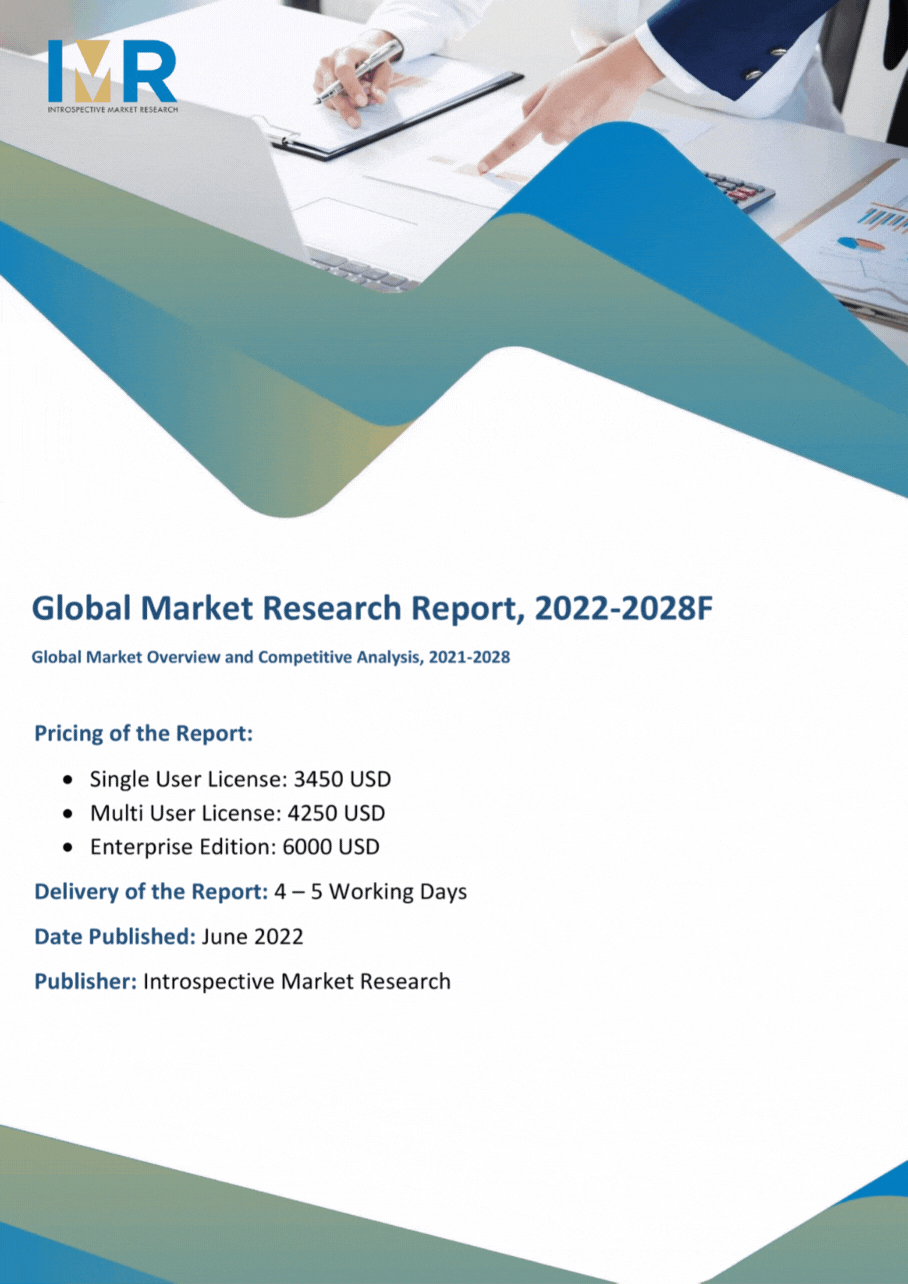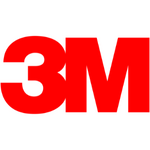Beauty Products Market Synopsis
Beauty Products Market Size Was Valued at USD 407.68 Billion in 2023, and is Projected to Reach USD 731.42 Billion by 2032, Growing at a CAGR of 6.71% From 2024-2032.
Beauty products are those that are meant to improve a person's look and overall health. They may consist of a variety of goods, including makeup, skincare, hair care, and other items. Depending on where they came from, these goods can be categorised as natural (herbal) or commercial.
- Commercial cosmetic products frequently contain chemicals that, when used topically, may cause adverse reactions. Conversely, natural beauty products are thought to be safer to use because they are made of natural substances. The cosmetics industry is fiercely competitive, ever-changing, and centred around market expansion and innovation. A developing area of wearable computer technology is called "beauty technology," which entails integrating electromagnetic devices for interaction with non-intrusive beauty goods. distinct surfaces. All things considered, beauty products are a big part of improving one's look and encouraging self-care and wellbeing.
- As such, there has been a notable shift in the beauty business, with themes emerging Clean Beauty, Men's Cosmetics, Multifunctional Cosmetics, Artificial Intelligence and Big Data, Sustainability, and Customer Loyalty. Using natural materials and transparency is key in the trend, Clean Beauty. Sustainable sourcing methods and transparent ingredient lists should be brands' top priorities as consumers grow more knowledgeable and conscious about the products they put on their skin. It's a widespread want backed by increasing market data rather than only a specialised preference. Innovation in product development and marketing is being driven by the application of AI and Big Data. To more effectively tailor and engage customers, brands are switching from manual approaches to data driven by AI. Brands which can transform big data into useful insights for consumer satisfaction and product development will win the future.
- The business's growing prominence in the men's cosmetics sector. To effectively engage this expanding population, the beauty business needs to extend its offerings and modify its marketing techniques, as men are now consuming more products than ever before. As young men get older, this is a long-term tendency that will persist, according to current research, rather than a passing phenomenon.
- The Multifunctional Cosmetics addresses the need of customers to make sense of their cosmetic regimens. Multiple benefit products are in high demand, primarily due to lifestyle adjustments brought on by the epidemic. These multipurpose items also fit in nicely with a more environmentally conscious aesthetic, which is another major customer concern. The intricate world of customer behaviour is described in Sustainability & Customer Loyalty. Although consumers show brand loyalty, they also show that they are open to exploring new options, particularly if these are consistent with their values (e.g., sustainability and ethical standards). In this expanding industry, brands who can combine consumer loyalty with environmental practices will stand to gain the most.
- These developments collectively suggest that consumers are become increasingly discriminating, knowledgeable, and aware, and that they care just as much about the ethical ramifications of their cosmetic decisions as they do about their efficacy. Therefore, cosmetic businesses need to implement a multidimensional strategy that considers these developments to keep their relevance and market dominance. They ought to allocate resources towards the creation of eco-friendly and multipurpose items, employ artificial intelligence and big data to tailor the customer experience, broaden their attention to include the expanding male market, and prioritise sustainability as a fundamental principle of their business. By paying great attention to these crucial areas of optimisation, businesses may ensure longevity and success in an industry by meeting present consumer expectations as well as projecting future needs.

Beauty Products Market Trend Analysis
Multifactional Cosmetics & Men’s Cosmetology
- One of the most noticeable changes in the beauty industry's quick adaptation to shifting consumer preferences is the rise in demand for multipurpose cosmetics. There is a discernible trend in 2023 towards products with multitasking capabilities. This change is mostly the result of the "skinimalism" movement, which highlights the advantages of a simplified skincare regimen. This trend has been mostly driven by the pandemic. The need for items that offer various benefits without requiring a lot of distinct products is growing as people spend more time indoors and adopt simpler routines. This not only streamlines the self-care regimen but also aligns with a more eco-friendly and understated approach to skincare and makeup application. Products that contain 2, 3 or even 4 active ingredients in moisturisers and serums are in high demand. Another example is tinted sunscreens, which combine UV protection with a touch of colour for a natural-looking skin. Makeup and skincare hybrids are also becoming a favourite, combining the test of skincare with the aesthetic appeal of makeup.
- The increased emphasis on men's cosmetics is another important trend in the beauty industry. Products and marketing tactics targeted at women have historically dominated this sector, but it is currently changing as men become a more significant demographic. Males are using more personal care items on a regular basis, according to a new Morning Consult survey done in association with the health organisation EWG. Men now utilise an average of eleven goods in their daily routine, compared to six in 2004. The nearly twofold rise in product usage highlights the growth of men's self-care.

Source: ResearchGate
- The tendency for personal care items is higher in younger males. According to this, the men's cosmetics market will only get bigger as this population gets older, solidifying its place in the business. But satisfying the demands of the male audience requires more than just extending current tactics. Selling to males demands a different strategy. The fundamental element of storytelling in short-form films is still important, but there has been a discernible change in favour of athlete and celebrity endorsements. Additionally, compared to the narrative-oriented strategy frequently found in advertising for women, visuals for items aimed at men tend to lean more towards basic product pictures.
Restraints
Heath Related Concern for Use of Beauty Product
- Globally, the use of cosmetic items is rising, and this growth is accompanied by a diversity of chemical compounds being employed in their creation. This raises the possibility of intoxication, allergic reactions, extended chemical exposure, adverse effects, and careless use. The goal of the current study is to draw attention to the biological concerns that makeup's harmful ingredients provide to human health.
- The use of ingredients with preservative activity, surfactants, perfumes, stains, and other ingredients in the creation of cosmetic goods has expanded recently in the cosmetic industries. While many of these compounds are harmful to humans and pose health concerns ranging from a minor hypersensitivity reaction to anaphylaxis process or even deadly intoxication, they also enhance the quality, properties, and shelf life of cosmetics. Therefore, the careless use of makeup could emerge as a public health concern. Taking the into consideration, the goal of this work is to promote advancements in the quest for novel approaches to quality control in the global manufacturing and use of cosmetic products.
- The adverse effects of cosmetic products are becoming increasingly common in the global population due to the growing use of these items and increased exposure to the formulae' ingredients over extended periods of time. Globally, both men and women use copious amounts of cosmetics to prolong their youth, sometimes overlooking the potential health hazards. Components used in cosmetics are also becoming contaminants. They are only beginning to monitor the environment. Nonetheless, it is well recognised that they enter the environment through a variety of routes, frequently via water, endangering human health as well as the health of freshwater and marine ecosystems.
- Several health monitoring authorities worldwide have implemented limits on the use of specific cosmetic ingredients; nevertheless, any item that is not on the list of restricted ingredients is permitted. As a result, the sector frequently uses novel compounds that aren't on the list of restrictions because it is highly inventive and continually striving to improve its goods. These substances are brand-new potential allergens. In contrast to pharmaceuticals, cosmetics lack a dedicated agency to evaluate their safety, a marketing authorisation with detailed standards, a risk-benefit analysis, and guarantee of consistency among batch.
Opportunity
AI-Technology for Beauty Suggestions Create Demand for Product
- Big data and artificial intelligence are driving an evolution in the beauty sector. Companies are employing these technologies more frequently to promote product innovation in addition to enhancing the consumer experience. Future-proof brands will be those who can actively include their communities in the creation of new products. This community-focused strategy makes use of information gathered from consumer preferences, surveys, and search trends.
- Procter & Gamble and Olay collaborated to launch Olay Skin Advisor, a perfect illustration of this. With more than 10 million data points, this instrument has yielded insights that have facilitated the production of new product lines, including Olay Retinol 24 and fragrance-free versions of their well-liked moisturisers. This move was described as a change from "digital thinking for selling to digital thinking for design" by Eric Grun of Olay.
- Technology integration has also resulted in partnerships between tech titans and beauty firms. One such instance is Perfect Corp's collaboration with Alibaba, which features augmented reality-based virtual meetings and has significantly raised Alibaba's conversion rate. Due to this success, well-known companies like MAC, NARS, and L'Oreal are currently investigating the possibilities of augmented and virtual reality, as well as artificial intelligence. L'Oreal's management views the company as transitioning from a simple cosmetics brand to a "beauty technology company" due to its strong technological foundation. In reality, brands that use artificial intelligence, big data, and public input are set to lead the way in innovation and customer happiness as the beauty industry looks for more customised and technologically advanced solutions.
Challenges
Govt Rule Regulation of Different Countries and Durability Of Product
- The legislative criteria and rules that control the production, labelling, safety, and quality of beauty products are referred to as regulatory standards in the beauty product business. These regulations are in place to safeguard the health and safety of consumers, guarantee the quality of products, and give them transparency. The beauty product sector is subject to regulatory standards that might change greatly between nations owing to variations in laws, rules, and cultural preferences.
- The EU Cosmetic Regulation covers cosmetics and is applicable to all EU (and EEA) member states. should familiarise with this rule if you intend to sell cosmetics in the EU. Other nations have their own laws, such as the USA (including the recently enacted modification to its cosmetic legislation known as MoCRA), China, Japan, Australia, and Canada, as well as ASEAN (a conglomerate of Asian nations). Knowing the precise laws that a product needs to abide by is crucial while manufacturing it. This entails keeping up with laws governing safety testing, labelling specifications, and ingredient limitations. Remember to stay informed not only today but tomorrow as laws are subject to frequent updates.
- Because each beauty product has numerous subparts, it is difficult to manufacture a safe and conforming product. Consider raw materials, physical characteristics such as pH and viscosity, accurate labelling, GMP (good manufacturing practices), packaging, and testing for shelf-life beauty product components are interdependent. Before begin assembling things, must arrange sources (raw materials, packaging materials). Additionally, to accurately include the expiration date on the artwork, must be aware of the product's shelf life. As a manufacturer, must oversee hundreds or even thousands of products at once rather than just one or two at a time. These challenges affect the market.
Beauty Products Market Segment Analysis:
Beauty Products market is segmented on the basis of Type, Product, Gender, Distribution.
By Type, Natural (Herbal) Segment Is Expected to Dominate the Market During the Forecast Period
By type there is two types of segments commercial and Natural (Herbal). In which Natural (Herbal) Is Expected to Dominate the Market During the Forecast Period.
- The demand for natural and transparent products is expanding quickly. This tendency is supported by statistical data, which indicates a steady increase trend in recent years.
Consumers today are turning more and more towards companies that highlight natural ingredients in their goods and transparency in their ingredient lists. The idea of pure beauty has been gaining popularity recently, but it is not without its ambiguities, particularly when it comes to defining what "natural" or "clean" really means. The situation is made more complicated by the disparate standards that regulatory agencies like the EU and the FDA have for illegal components.
- Despite this uncertainty, though, companies that take a definite and open stand are beginning to emerge, catering to consumers who pay close attention to ingredient lists. that customers are actively shaping what they considered "natural," rather than only blindly believing brands. Goods that are self-declared natural and paraben-free outsell those that only make a statement. One such product is Kiehl's Ultra Facial Cream, which saw a notable boost in sales following a recipe modification that removed parabens, solidifying its standing as one of the leading luxury skincare brands in the US. The inclination towards natural products has led to the emergence of specialised markets like "blue beauty," which concentrate on goods with low environmental impact on water resources and oceans. Brands like Florence by Mills are leveraging the eco-friendly cosmetics trend to reach a wider audience by focusing on younger generations like Generation Z, who are more aware of global issues like climate change. Furthermore, companies who prioritise transparency, like From Molly with Love, Biossance, and Beauty counter, distinguish themselves by disclosing the substances they do not use in their products.
By Distribution, Online Sales Channels Segment Held the Largest Share In 2023
By Distribution is segmented into Hypermarket/Supermarket, Pharmacies, Specialty Store, Online Sales Channels. In which Online Sales Channels Held the Largest Share In 2023
- Growth in online shopping for beauty has been fuelled by several factors, including the expansion of online giants like Amazon in the US and Tmall in China into the beauty space, the growing importance of online for omnichannel retailers, the rise of social selling, including livestreaming, in Asia, and the growing digital sophistication of direct-to-consumer players. With a projected growth rate of 12 percent annually between 2023 and 2027, e-commerce is predicted to remain the fastest-growing sales channel. However, growth in traditional channels, such as drugstores, speciality retail, and grocery retail, is anticipated to pick up after the pandemic, as consumers' preference for omnichannel is partially driven by their ongoing desire for in-store product discovery and trial. It is anticipated that department shops would keep losing market share worldwide.
- The cosmetics market is always changing. In today's environment, where social media and mass media have produced highly educated, discriminating consumers, trends change frequently. High levels of digitalisation have brought about changes in several operational areas, including perception, variety, product functionalities, and the shopping experience. Success in this industry depends on your ability to comprehend these developments so that you may differentiate yourself from the competition and provide better experiences.
In addition to helping consumers make decisions, virtual experiences and tailored product suggestions give companies and online merchants a chance to create cutting-edge customer experiences and boost loyalty. - It is obvious that influencer marketing innovative for the beauty sector, but it brought about changes in many other industries as well. Leading cosmetics and beauty brands now primarily receive referral traffic from social media networks, which has forced many major brands to provide content to remain relevant. Brands have also incorporated influencers' influences on the purchase inclinations of vast masses and used them as a marketing channel. A distinct term known as "influencer" has emerged to denote influencers who have focused their content on skincare and cosmetic products.
Beauty Products Market Regional Insights:
Asia Pacific is Expected to Dominate the Market Over the Forecast Period
- The Asia-Pacific area is keep growing its market share Because of the growing number of younger people in the region and rising personal care spending because of rising incomes in developing nations like China, India, and Japan, there are potential markets for cosmetics and beauty products in these nations. The demand for cosmetics and personal hygiene products is expanding in the area due in part to the growing investments made by global companies in the region's beauty industry. Furthermore, the market for cosmetics and personal care items has a solid foundation thanks to the general increase in popularity of K-beauty products in South Korea.
- Asia-Pacific consumers are becoming more health and hygiene conscious, which is driving up demand for natural or organic products. As a result, producers need to improve their product offerings to satisfy consumers' ever-changing demands, which are expected to fuel market expansion in the area. The expansion of the Asia-Pacific beauty and personal care market has been positively impacted by China's rapid advancements in retail. Renowned brands such as L'Oréal, Estée Lauder, Shiseido, Watsons, and Sephora have captured consumers' attention with innovative retailing technology and experiences.
- The growing desire for anti-aging products and innovative, eco-friendly container designs is driving growth in Japan's beauty and personal care business. Online shopping channels have an impact on the nation's sales of skin care and personal hygiene items. Moreover, significant marketing expenditures combined with breakthroughs in formulation chemistry through research and development (R&D) have traditionally dominated skin and personal care innovations in Japan. The nation's expanding range of innovative product innovations is being driven by shifting customer expectations and tastes, which is also driving up demand for cosmetics and personal hygiene products.
Beauty Products Market Active Players
- Estée Lauder (U.S.A)
- Procter & Gamble (U.S.A)
- Avon (U.S.A)
- Revlon (U.S.A)
- Johnson And Johnson (U.S.A)
- Natura &Co (U.S.A)
- Mary Kay (U.S.A)
- Alticor (U.S.A)
- Coty (U.S.A)
- Wella Co. (U.S.A)
- Beiersdorf (Europe)
- Unilever (Europe)
- Henkel (Europe)
- Groupe Rocher (Europe)
- Yves Rocher (Europe)
- Oriflame Cosmetics Global (Europe)
- LVMH (Europe)
- Chanel (Europe)
- Kao (Asia)
- AMOREPACIFIC (Asia)
- Jala Group (Asia)
- Pechoin (Asia)
- Shanghai jawha (Asia)
- Shiseido (Asia)
- L'Occitane International S.A. (Asia) And Other Active Key Players
Key Industry Developments in the Beauty Products Market:
- In June 2024, Bumble and Bumble, an expert hairstyling brand, announced its debut in the U.S. Amazon Premium Beauty store bringing its easy-to-use, high-performing products and styling expertise to new consumers in the U.S. Prime members enjoy fast, free shipping on every order.
- In June 2024, The Estée Lauder Companies Inc. announced that it had completed its acquisition of the Canadian-based, vertically integrated, multi-brand company DECIEM Beauty Group Inc.. ELC first invested in DECIEM in 2017, increased its stake to become the majority owner in 2021, and recently exercised its option to purchase the remaining interests in DECIEM after three years. ELC closed on the purchase of the remaining interests on May 31, 2024, using cash on hand for an estimated $860 million. The total investment, net of cash, approximated $1.7 billion over the three tranches. These amounts are subject to post-closing adjustments following the agreement.
|
Global Beauty Products Market |
|||
|
Base Year: |
2023 |
Forecast Period: |
2024-2032 |
|
Historical Data: |
2017 to 2023 |
Market Size in 2023: |
USD 407.68 Bn. |
|
Forecast Period 2024-32 CAGR: |
6.71 % |
Market Size in 2032: |
USD 731.42 Bn. |
|
Segments Covered: |
By Type |
|
|
|
By Product |
|
||
|
By Gender |
|
||
|
By Distribution |
|
||
|
By Region |
|
||
|
Key Market Drivers: |
|
||
|
Key Market Restraints: |
|
||
|
Key Opportunities: |
|
||
|
Companies Covered in the report: |
Estée Lauder (U.S.A) Procter & Gamble (U.S.A), Avon (U.S.A), Revlon (U.S.A), Johnson And Johnson (U.S.A), Natura &Co (U.S.A) |
||
- INTRODUCTION
- RESEARCH OBJECTIVES
- RESEARCH METHODOLOGY
- RESEARCH PROCESS
- SCOPE AND COVERAGE
- Market Definition
- Key Questions Answered
- MARKET SEGMENTATION
- EXECUTIVE SUMMARY
- MARKET OVERVIEW
- GROWTH OPPORTUNITIES BY SEGMENT
- MARKET LANDSCAPE
- PORTER’S FIVE FORCES ANALYSIS
- Bargaining Power of Supplier
- Threat Of New Entrants
- Threat Of Substitutes
- Competitive Rivalry
- Bargaining Power Among Buyers
- INDUSTRY VALUE CHAIN ANALYSIS
- MARKET DYNAMICS
- Drivers
- Restraints
- Opportunities
- Challenges
- MARKET TREND ANALYSIS
- REGULATORY LANDSCAPE
- PESTLE ANALYSIS
- PRICE TREND ANALYSIS
- PATENT ANALYSIS
- TECHNOLOGY EVALUATION
- MARKET IMPACT OF THE RUSSIA-UKRAINE WAR
- Geopolitical Market Disruptions
- Supply Chain Disruptions
- Instability in Emerging Markets
- ECOSYSTEM
- PORTER’S FIVE FORCES ANALYSIS
- BEAUTY PRODUCTS MARKET BY TYPE (2017-2032)
- BEAUTY PRODUCTS MARKET SNAPSHOT AND GROWTH ENGINE
- MARKET OVERVIEW
- NATURAL(HERBAL)
- Introduction And Market Overview
- Historic And Forecasted Market Size in Value (2017-2032F)
- Historic And Forecasted Market Size in Volume (2017-2032F)
- Key Market Trends, Growth Factors and Opportunities
- Geographic Segmentation Analysis
- COMMERCIAL
- BEAUTY PRODUCTS MARKET BY PRODUCT (2017-2032)
- BEAUTY PRODUCTS MARKET SNAPSHOT AND GROWTH ENGINE
- MARKET OVERVIEW
- SKIN CARE
- Introduction And Market Overview
- Historic And Forecasted Market Size in Value (2017-2032F)
- Historic And Forecasted Market Size in Volume (2017-2032F)
- Key Market Trends, Growth Factors And Opportunities
- Geographic Segmentation Analysis
- HAIR CARE
- COLOR COSMETICS
- DEODORANTS&FRAGRANCE
- BEAUTY PRODUCTS MARKET BY GENDER (2017-2032)
- BEAUTY PRODUCTS MARKET SNAPSHOT AND GROWTH ENGINE
- MARKET OVERVIEW
- MALE
- Introduction And Market Overview
- Historic And Forecasted Market Size in Value (2017-2032F)
- Historic And Forecasted Market Size in Volume (2017-2032F)
- Key Market Trends, Growth Factors And Opportunities
- Geographic Segmentation Analysis
- FEMALE
- UNISEX
- BEAUTY PRODUCTS MARKET BY DISTRIBUTION (2017-2032)
- BEAUTY PRODUCTS MARKET SNAPSHOT AND GROWTH ENGINE
- MARKET OVERVIEW
- HYPERMARKET/SUPERMARKET
- Introduction And Market Overview
- Historic And Forecasted Market Size in Value (2017-2032F)
- Historic And Forecasted Market Size in Volume (2017-2032F)
- Key Market Trends, Growth Factors And Opportunities
- Geographic Segmentation Analysis
- PHARMACIES
- SPECIALTY STORE
- ONLINE SALES CHANNELS
- COMPANY PROFILES AND COMPETITIVE ANALYSIS
- COMPETITIVE LANDSCAPE
- Competitive Benchmarking
- Beauty Products Market Share By Manufacturer (2023)
- Industry BCG Matrix
- Heat Map Analysis
- Mergers & Acquisitions
- ESTÉE LAUDER (U.S.A)
- Company Overview
- Key Executives
- Company Snapshot
- Role of the Company in the Market
- Sustainability and Social Responsibility
- Operating Business Segments
- Product Portfolio
- Business Performance (Production Volume, Sales Volume, Sales Margin, Production Capacity, Capacity Utilization Rate)
- Key Strategic Moves And Recent Developments
- SWOT Analysis
- PROCTER & GAMBLE (U.S.A)
- AVON (U.S.A)
- REVLON (U.S.A)
- JOHNSON AND JOHNSON (U.S.A)
- NATURA &CO (U.S.A)
- MARY KAY (U.S.A)
- ALTICOR (U.S.A)
- COTY (U.S.A)
- WELLA CO. (U.S.A)
- BEIERSDORF (EUROPE)
- UNILEVER (EUROPE)
- HENKEL (EUROPE)
- GROUPE ROCHER (EUROPE)
- YVES ROCHER (EUROPE)
- ORIFLAME COSMETICS GLOBAL (EUROPE)
- LVMH (EUROPE)
- CHANEL (EUROPE)
- KAO (ASIA)
- AMOREPACIFIC (ASIA)
- JALA GROUP (ASIA)
- PECHOIN (ASIA)
- SHANGHAI JAWHA (ASIA)
- SHISEIDO (ASIA)
- L'OCCITANE INTERNATIONAL S.A. (ASIA)
- COMPETITIVE LANDSCAPE
- GLOBAL BEAUTY PRODUCTS MARKET BY REGION
- OVERVIEW
- NORTH AMERICA
- Key Market Trends, Growth Factors And Opportunities
- Key Manufacturers
- Historic And Forecasted Market Size By Type
- Historic And Forecasted Market Size By Product
- Historic And Forecasted Market Size By Gender
- Historic And Forecasted Market Size By Distribution
- USA
- Canada
- Mexico
- EASTERN EUROPE
- Key Market Trends, Growth Factors And Opportunities
- Key Manufacturers
- Historic And Forecasted Market Size By Segments
- Historic And Forecasted Market Size By Country
- Russia
- Bulgaria
- The Czech Republic
- Hungary
- Poland
- Romania
- Rest Of Eastern Europe
- WESTERN EUROPE
- Key Market Trends, Growth Factors And Opportunities
- Key Manufacturers
- Historic And Forecasted Market Size By Segments
- Historic And Forecasted Market Size By Country
- Germany
- United Kingdom
- France
- The Netherlands
- Italy
- Spain
- Rest Of Western Europe
- ASIA PACIFIC
- Key Market Trends, Growth Factors And Opportunities
- Key Manufacturers
- Historic And Forecasted Market Size By Segments
- Historic And Forecasted Market Size By Country
- China
- India
- Japan
- South Korea
- Malaysia
- Thailand
- Vietnam
- The Philippines
- Australia
- New-Zealand
- Rest Of APAC
- MIDDLE EAST & AFRICA
- Key Market Trends, Growth Factors And Opportunities
- Key Manufacturers
- Historic And Forecasted Market Size By Segments
- Historic And Forecasted Market Size By Country
- Turkey
- Bahrain
- Kuwait
- Saudi Arabia
- Qatar
- UAE
- Israel
- South Africa
- SOUTH AMERICA
- Key Market Trends, Growth Factors And Opportunities
- Key Manufacturers
- Historic And Forecasted Market Size By Segments
- Historic And Forecasted Market Size By Country
- Brazil
- Argentina
- Rest of South America
- INVESTMENT ANALYSIS
- ANALYST VIEWPOINT AND CONCLUSION
- Recommendations and Concluding Analysis
- Potential Market Strategies
-
- Thailand
- Vietnam
- The Philippines
- Australia
- New-Zealand
- Rest Of APAC
-
- MIDDLE EAST & AFRICA
- Key Market Trends, Growth Factors And Opportunities
- Key Manufacturers
- Historic And Forecasted Market Size By Segments
- Historic And Forecasted Market Size By Country
- Turkey
- Bahrain
- Kuwait
- Saudi Arabia
- Qatar
- UAE
- Israel
- South Africa
- SOUTH AMERICA
- Key Market Trends, Growth Factors And Opportunities
- Key Manufacturers
- Historic And Forecasted Market Size By Segments
- Historic And Forecasted Market Size By Country
- Brazil
- Argentina
- Rest of South America
- INVESTMENT ANALYSIS
- ANALYST VIEWPOINT AND CONCLUSION
- Recommendations and Concluding Analysis
- Potential Market Strategies
|
Global Beauty Products Market |
|||
|
Base Year: |
2023 |
Forecast Period: |
2024-2032 |
|
Historical Data: |
2017 to 2023 |
Market Size in 2023: |
USD 407.68 Bn. |
|
Forecast Period 2024-32 CAGR: |
6.71 % |
Market Size in 2032: |
USD 731.42 Bn. |
|
Segments Covered: |
By Type |
|
|
|
By Product |
|
||
|
By Gender |
|
||
|
By Distribution |
|
||
|
By Region |
|
||
|
Key Market Drivers: |
|
||
|
Key Market Restraints: |
|
||
|
Key Opportunities: |
|
||
|
Companies Covered in the report: |
Estée Lauder (U.S.A) Procter & Gamble (U.S.A), Avon (U.S.A), Revlon (U.S.A), Johnson And Johnson (U.S.A), Natura &Co (U.S.A) |
||
Frequently Asked Questions :
The forecast period in the Beauty Products Market research report is 2024-2032.
Estée Lauder (U.S.A)Procter & Gamble (U.S.A),Avon (U.S.A),Revlon (U.S.A),Johnson And Johnson (U.S.A),Natura &Co (U.S.A),Mary Kay (U.S.A),Alticor (U.S.A),Coty (U.S.A),Wella Co. (U.S.A),Beiersdorf (Europe),Unilever (Europe),Henkel (Europe),Groupe Rocher (Europe),Yves Rocher (Europe),Oriflame Cosmetics Global (Europe),LVMH (Europe),Chanel (Europe),Kao (Asia),AMOREPACIFIC (Asia),Jala Group (Asia),Pechoin (Asia),Shanghai jawha (Asia),Shiseido (Asia),L'Occitane International S.A. (Asia) and Other Active Players.
The Beauty Products Market is segmented into Type, Product, Gender, Distribution, and region. By Type, the market is categorized into Natural (Herbal), Commercial. By Product, the market is categorized into Skin Care, Hair Care, Color Cosmetics, Deodorants Fragrance, By Gender, the market is categorized into Male, Female, Unisex. By Distribution, the market is categorized into Hypermarket/Supermarket, Pharmacies, Specialty Store, Online Sales Channels. By region, it is analyzed across North America (U.S.; Canada; Mexico), Eastern Europe (Bulgaria; The Czech Republic; Hungary; Poland; Romania; Rest of Eastern Europe), Western Europe (Germany; UK; France; Netherlands; Italy; Russia; Spain; Rest of Western Europe), Asia-Pacific (China; India; Japan; Southeast Asia, etc.), South America (Brazil; Argentina, etc.), Middle East & Africa (Saudi Arabia; South Africa, etc.).
Beauty products are those that are meant to improve a person's look and overall health. They may consist of a variety of goods, including makeup, skincare, hair care, and other items. Depending on where they came from, these goods can be categorised as natural (herbal) or commercial. Commercial cosmetic products frequently contain chemicals that, when used topically, may cause adverse reactions. Conversely, natural beauty products are thought to be safer to use because they are made of natural substances. The cosmetics industry is fiercely competitive, ever-changing, and centred around market expansion and innovation. A developing area of wearable computer technology is called "beauty technology," which entails integrating electromagnetic devices for interaction with non-intrusive beauty goods. distinct surfaces. All things considered, beauty products are a big part of improving one's look and encouraging self-care and wellbeing.
Beauty Products Market Size Was Valued at USD 407.68 Billion in 2023, and is Projected to Reach USD 731.42 Billion by 2032, Growing at a CAGR of 6.71% From 2024-2032.



































